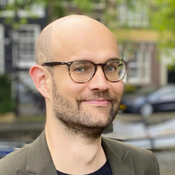- Submit
-
Browse
- All Categories
- Metaphysics and Epistemology
- Value Theory
- Science, Logic, and Mathematics
- Science, Logic, and Mathematics
- Logic and Philosophy of Logic
- Philosophy of Biology
- Philosophy of Cognitive Science
- Philosophy of Computing and Information
- Philosophy of Mathematics
- Philosophy of Physical Science
- Philosophy of Social Science
- Philosophy of Probability
- General Philosophy of Science
- Philosophy of Science, Misc
- History of Western Philosophy
- Philosophical Traditions
- Philosophy, Misc
- Other Academic Areas
- More
The Analytic Turn in American Philosophy: An Institutional Perspective—Part 1: Scientific versus Humanistic Philosophy
Abstract
This two-part paper reconstructs the analytic turn in American philosophy through a comparative, longitudinal study of philosophy departments at three major universities: Princeton, Yale, and Columbia. I trace their hiring policies, tenure decisions, and curriculum designs and the external pressures that forced them to continuously adapt their strategies, and I use those analyses to distill some of the factors that contributed to the rapid growth of analytic philosophy between 1940 and 1970. In this first part, I show that philosophers at Princeton, Yale, and Columbia actively tried to promote a “humanistic” conception of philosophy until the early 1950s. I argue that logical positivism and related “scientific” approaches were seen as a fundamental threat to the discipline and that this opposition influenced decision-making at all three institutions. Although many students and recent graduates saw philosophy as a scientific discipline, senior members of the community deplored the decline of the humanities and appointed mostly humanistic philosophers. I show that this generational conflict was reinforced by demographic, political, and economic developments and argue that these discriminatory practices helped forge a coalition between logical empiricists, scientific pragmatists, and ordinary language philosophers, who all began to identify as “analytic” philosophers after the war.Author's Profile
Sander Verhaegh
Tilburg University
Analytics
Added to PP
2024-11-11
Downloads
546 (#57,515)
6 months
329 (#8,772)
2024-11-11
Downloads
546 (#57,515)
6 months
329 (#8,772)
Historical graph of downloads since first upload
This graph includes both downloads from PhilArchive and clicks on external links on PhilPapers.
How can I increase my downloads?


